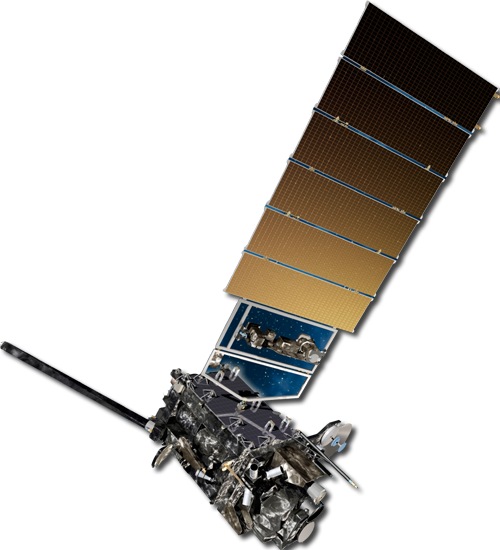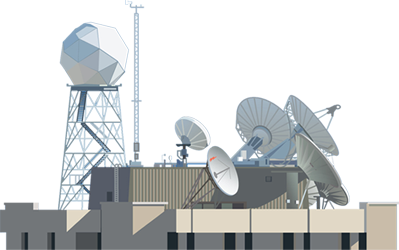Monitoring the Global Environment

The POES Earth Observing Satellite (EOS) Program - II
AQUA

"Aqua" is the Latin word for "water". The Aqua mission is named for the large amount of information it collects about the Earth's water cycle, including ocean surface water, evaporation from the oceans, water vapor in the atmosphere, clouds, precipitation, soil moisture, sea ice, land ice, and snow cover. Aqua also hosts three high powered sounders that provide high precision vertical profiles of the Earth's atmosphere.
Instruments
There are six instruments on the Aqua satellite:
- AIRS – Atmospheric Infrared Sounder
- AMSR-E – Advanced Microwave Scanning Radiometer for EOS
- AMSU – Advanced Microwave Sounding Unit
- CERES – Clouds and the Earth’s Radiant Energy System
- HSB – Humidity Sounder for Brazil
- MODIS – Moderate-resolution Imaging Spectroradiometer
Technically the spacecraft has eight EOS instruments since there are two identical copies of CERES and the AMSU. Collectively they will gather radiation data from a large portion of the electromagnetic spectrum, ranging from the ultraviolet, visible, infrared and microwave wavelengths. By having multiple types of measurements, scientists can gain a more complete understanding of the Earth/atmosphere system.
The key science topics addressed by Aqua are atmospheric temperature, sea ice cover, deforestation and other changes in vegetation cover, changes in the stratospheric "ozone hole", weather forecasting, clouds, and natural hazards. Alarm systems using satellite observations to monitor fire, famine, floods and volcanoes are currently under development. The applications are endless.
| 9/ 15 |






